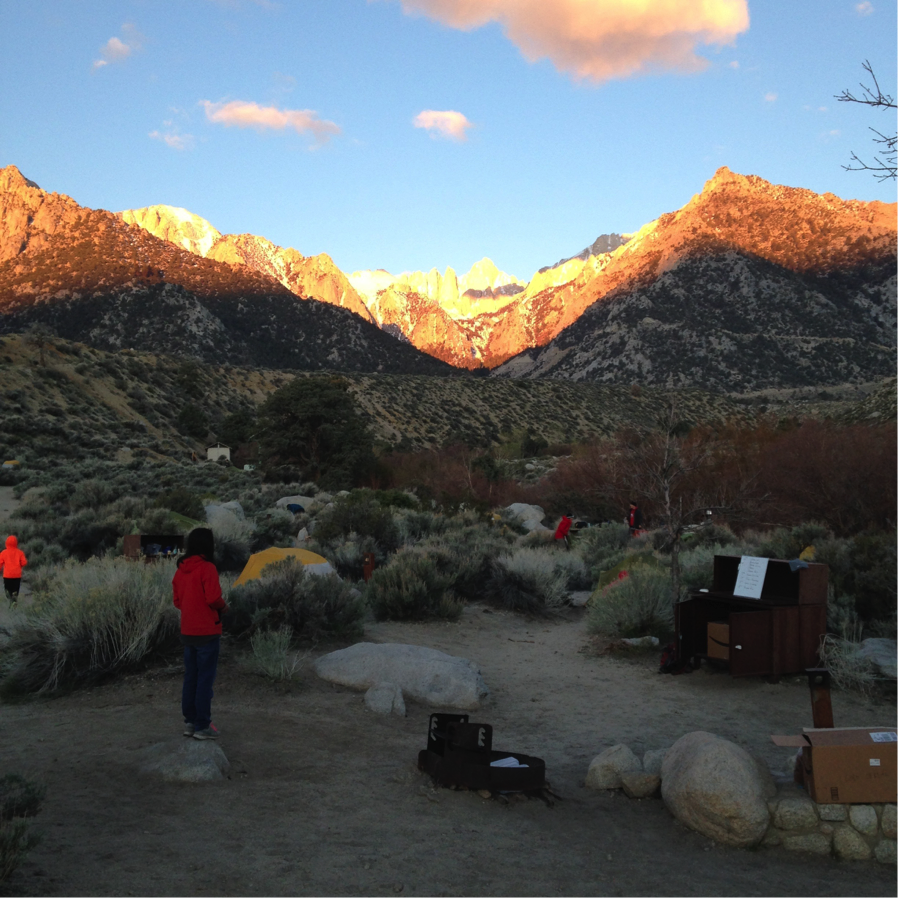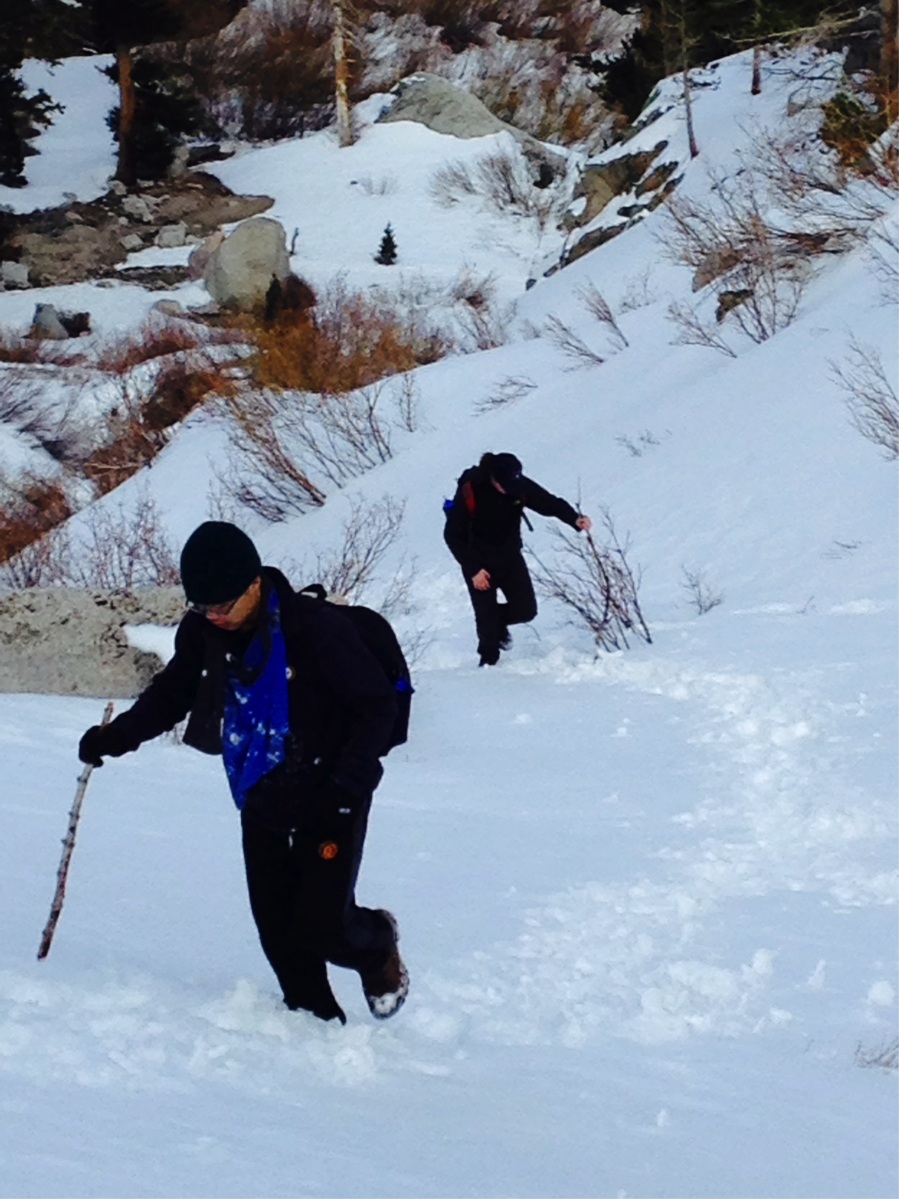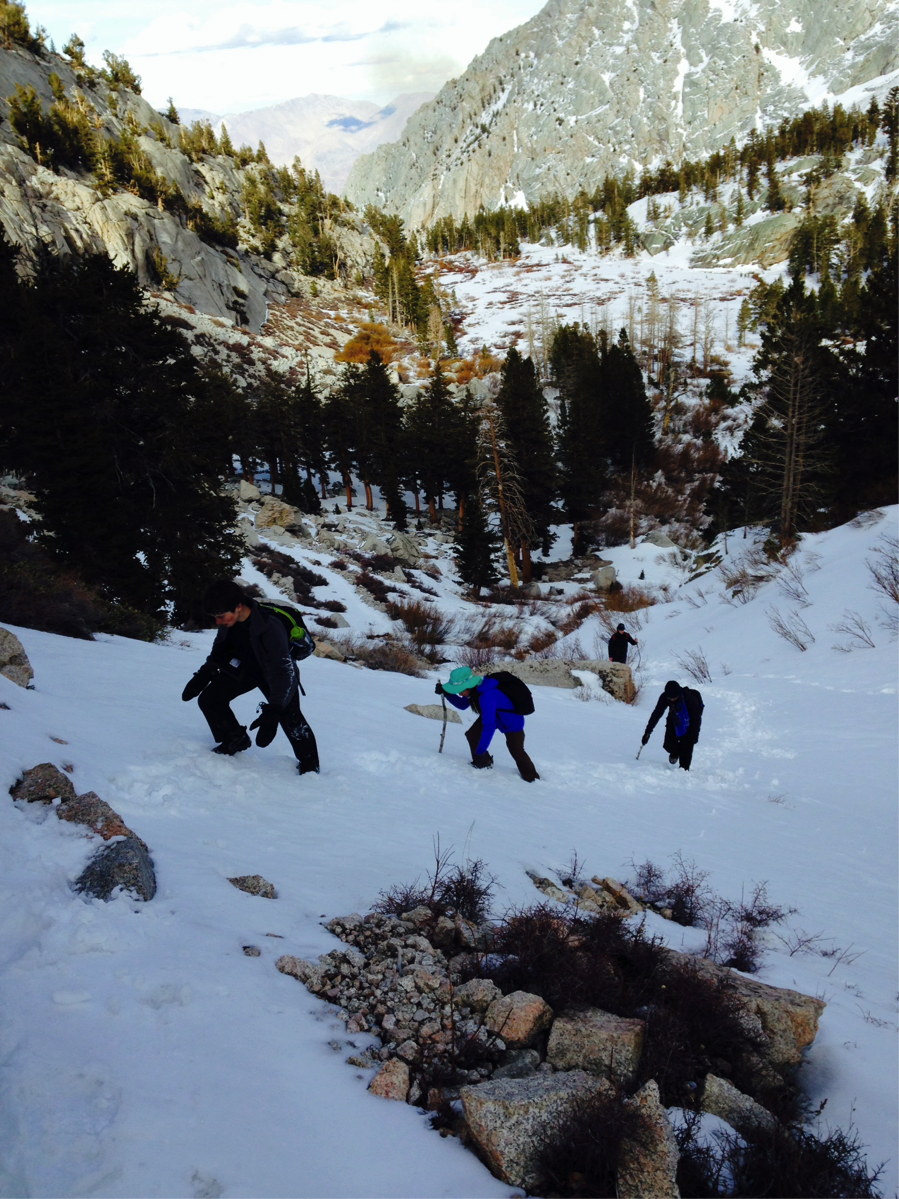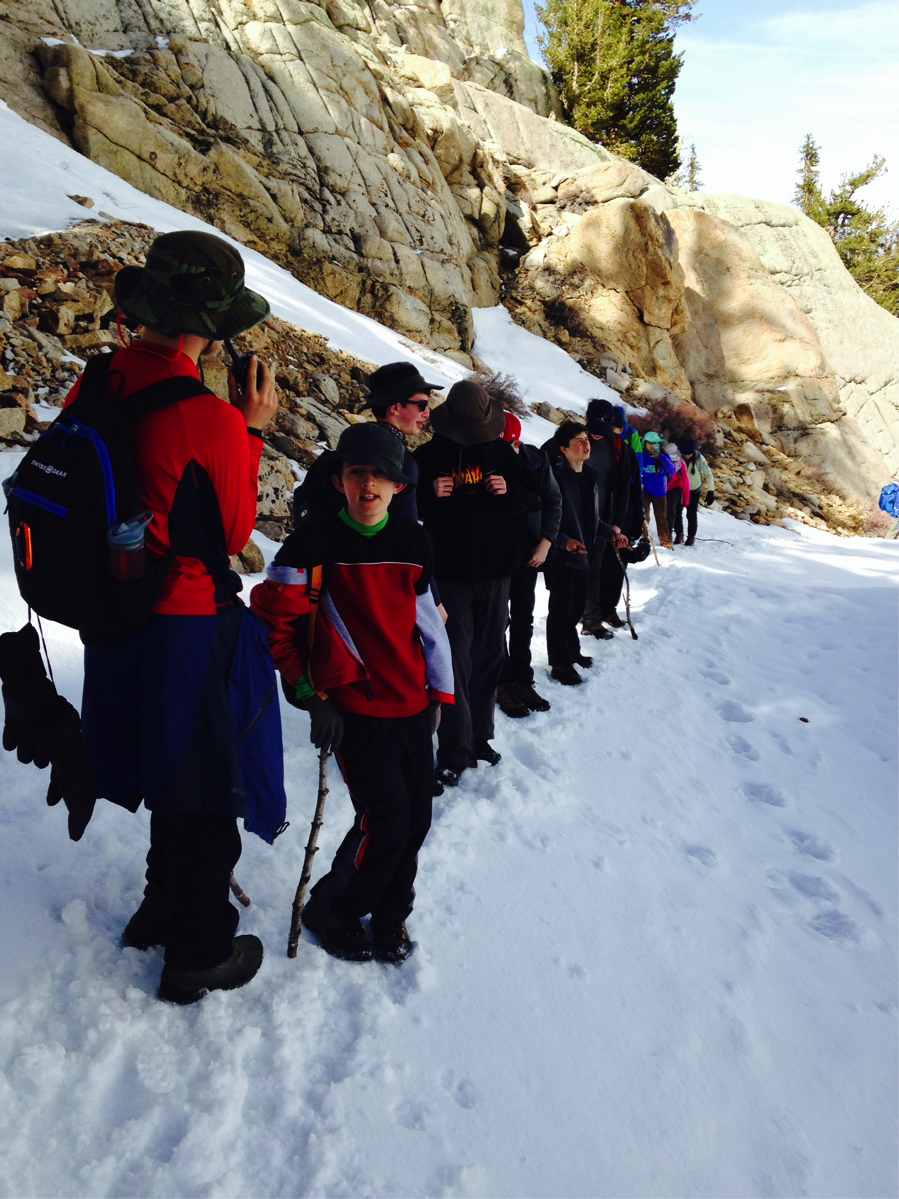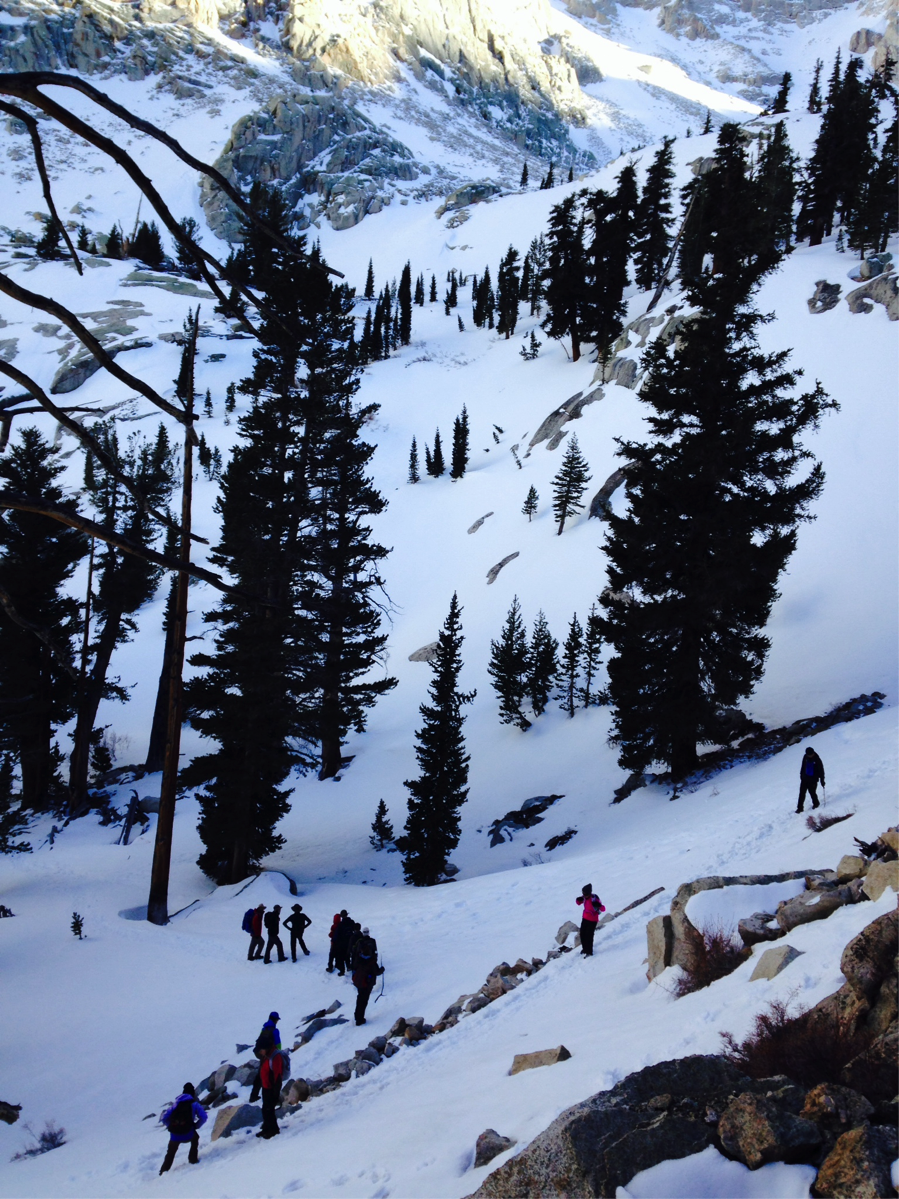Mountaineering Log Entry Climbing Team: Odyssey School Expedition Name: Orientation - Finding Our True North…
Mt. Whitney, Califorina – March 2016
Dear Parents,
I am writing this letter to offer a few ideas and observations about Odyssey’s most recent Mt. Whitney Joint Expedition. Most likely, when you picked up your kids last Friday you might have noticed that the troops looked like they just returned from a major military engagement. Truth be told – they did! The look in the students’ eyes, I hope, conveyed the critical difference between an expedition and a school trip. Odyssey is one of about a half dozen schools in California that can successfully host high impact outdoor experiences that potentially can be “difference makers” in the lives of young people. All schools take students on field trips to places like the Grand Canyon and Yosemite but these trips are not bona fide expeditions. The reason for this can be found in expeditionary theory – a body of knowledge that clearly charts the major differences between expeditionary work and the more typical school trips and outdoor education activities that most schools endeavor in. The Expedition Checklist, below, conveys the active instructional elements of an expedition that are generally absent on typical multi-day field trips.
Expedition Checklist
Philosophical Richness – commitment to the Hero’s and Heroine’s Journey is active in participants. Instructional themes include ethical expeditionary behaviors, respect for people (team members), and respect for the place (mother earth). Philosophical instruction takes place before, during, and after the expedition.
Removal – from parents, home comforts, and “the noise” of daily, ordinary, non-heroic life. This is essential. Expeditions offer inflection points for growth, maturity, independence, and leadership. Both parents and students tend to want to communicate with each other like they do on regular school days. On school trips, both constituents typically call, email, and text but this is not so on an expedition – by design. Removal is an essential ingredient in the expedition formula and it is essential for student and parent health.
Sweat Equity – expeditions should be ultra-hard physically. There also must be an Epic Day when students are on the trail for 10 plus hours to test the limits of their physical and mental endurance. The Epic Day might even include “The Night Approach” where participants return to base camp well after dark. Students benefit from the physical purification of toxins (through sweat) and this tends to clear their minds of daily clutter. Suddenly, students can visualize goals with a razor-sharp sense of focus and their sweat equity increases their commitment to the goals of the expedition.
The Road of Trials – the heroines/hero’s journey presents substantial challenges every hour of every day. Survival at base camp, organizational and hygiene challenges, getting along with hiking partners and tent mates, staying healthy and warm all become formidable tasks to manage. In this important space, students learn that they can succeed when the environment is challenging and this builds each participant’s confidence level. A “can do” attitude begins to replace the pre-existing “can’t do” approach.
Opportunities for Goal-Setting, Leadership, and Success are abundantly present on a daily basis during a real expedition. In a teamwork environment, students begin to focus on group goals and rather than being told what to do, they start to volunteer to help with meals, luggage, and equipment. Students begin to think about how they can contribute to the overall goals of the expedition and they begin to actively display an increased work ethic by thinking beyond their own personal needs.
The Role of Nature Therapy – there is an abundance of research that indicates that humans are beginning to lose contact with “mother earth” physically, emotionally, and psychologically. Consequently, our adaptive skill set inventories are diminishing as we continue to disassociate with nature. Expeditions provide students opportunities to adapt to nature’s changes. Students become increasingly attuned to weather patterns as well as the beauty of sunrise and sunset. Participants sleep directly on the ground to regain physical contact with mother earth and typical sleep patterns and circadian cycles are drastically changed. Students find time and space for quiet reflection and thought. Day to day noise is replaced with the symphonic sounds of nature – birds, waterfalls, running rivers, and the wind.
Less is More – students begin to appreciate the beauty and elegance of simplicity.
Evening Campfire – provides students with community voice opportunities to offer gratitude to those who helped them during the day’s road of trials. Often students thank their parents from the bottom of their hearts!
Whitney Records on Summit Day
Sherpa Group – 10,800 ft. – a mix of 8th and 7th graders broke all previous Odyssey records for elevation and completed a “Night Approach.”
Yak Group – 9,750 ft. – broke Odyssey’s previous highest height achieved 2 years ago on Mt. Whitney (9,500 ft.).
Fuji Group – 9,400 ft. – climbed to within 100 vertical feet of the highest height achieved 2 years ago on Mt. Whitney (9,500 ft.).
Photographs:
Mt Whitney – early morning on Summit Day – 15.5 miles from base camp
Two climbers in the 9,000 ft. zone ascending the first snowfield
The climbing column approaching 10,000 ft., Owen’s Valley in the distance
Resting on Thor’s Pass in thin air
Late afternoon descent – from 10,800 Ft – slow and steady!

